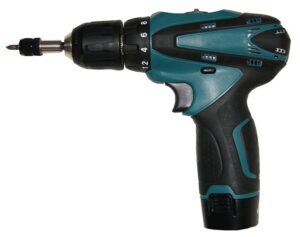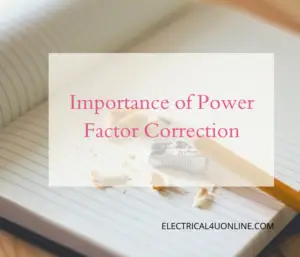Electric motors are an essential component of many modern machines and appliances, from cars and power tools to washing machines and refrigerators.
They rely on a steady supply of electricity to function, with voltage and current playing key roles in their operation.
But have you ever wondered why electric motor current increases when the voltage decreases? When the voltage applied to an electric motor decreases, the current flowing through it will increase in order to maintain the same level of magnetic field strength, according to Ohm’s Law.
In this article, we’ll explore the science behind this phenomenon and its implications for the design and operation of electric motors.
Table of Contents
How Electric Motors Work
Before we dive into the relationship between voltage and current in electric motors, let’s first review how electric motors work.
Electric motors use magnetic fields to convert electrical energy into mechanical energy, allowing them to power everything from fans and pump to elevators and conveyor belts.
The basic components of an electric motor include a stator (the stationary part) and a rotor (the rotating part).
The stator contains a series of electromagnets that create a rotating magnetic field when an electrical current flows through them.
The rotor, which is connected to the machine or appliance being powered, contains a series of conductive bars or coils that interact with the magnetic field to produce torque and rotation.
The Role of Voltage and Current in Electric Motors
In order to produce the rotating magnetic field that drives an electric motor, a steady supply of electricity is required.
This electricity comes in the form of voltage and current, which are related but distinct concepts.
Voltage is the electrical potential difference between two points in a circuit, typically measured in volts.
Current, on the other hand, is the flow of electrical charge (in the form of electrons) through a circuit, typically measured in amperes.
In an electric motor, voltage is used to create the electromagnetic field in the stator. The higher the voltage, the stronger the magnetic field, and the more torque the motor can produce.
However, the current is also required to produce this magnetic field. The more current that flows through the stator, the stronger the magnetic field will be.
The relationship between voltage, current, and the magnetic field strength is governed by a principle known as Ohm’s Law.
Ohm’s Law and Electric Motors
Ohm’s Law states that the current flowing through a circuit is directly proportional to the voltage applied to it and inversely proportional to the resistance of the circuit.
In an electric motor, the resistance of the circuit is primarily determined by the resistance of the stator windings.
As the voltage applied to the stator is increased, the current flowing through it will also increase, up to a certain point.
Beyond that point, the resistance of the windings will start to limit the current flow, and the magnetic field strength will plateau or even decrease.
Why Electric Motor Current Increases When Voltage Decreases
Now that we have a basic understanding of how electric motors work and the role of voltage and current in their operation, let’s explore why electric motor current increases when vthe oltage decreases.
The key to understanding this phenomenon lies in the relationship between voltage, current, and resistance.
When the voltage applied to an electric motor decreases, the current flowing through it will increase in order to maintain the same level of magnetic field strength.
This is because the resistance of the stator windings remains constant, and Ohm’s Law dictates that an increase in current is necessary to compensate for a decrease in voltage.
There are a few different factors that can cause a decrease in voltage in an electric motor. One common cause is a drop in the supply voltage from the power source, which can occur due to factors such as long power cables or voltage drops in the power grid.
Another cause of voltage decrease is a decrease in the back EMF (electromotive force) of the motor.
Back EMF is the voltage that is generated by the motor as it rotates, which opposes the supply voltage and reduces the current flowing through the motor.
However, if the motor is loaded down or stalled, the back EMF will decrease, which can cause the motor current to increase.
Examples of Situations Where Electric Motor Current Increases When Voltage Decreases
Low voltage conditions in power systems can cause electric motor current to increase. This is because the voltage drop across long power cables can reduce the voltage supplied to the motor.
As a result, the current flowing through the motor must increase to maintain the same level of magnetic field strength.
Starting and stopping an electric motor can also cause voltage fluctuations that can affect motor current.
When an electric motor is first started, it requires a surge of current to overcome the inertia of the load and get the rotor spinning.
This can cause a momentary drop in voltage, followed by a spike in current. Conversely, when an electric motor is stopped, the rotor will continue to spin for a brief period of time, generating a back EMF that can cause a momentary increase in voltage.
This increase in voltage can cause the motor current to decrease temporarily, but as the rotor slows down, the back EMF will decrease, causing the motor current to increase.
Temperature can also affect the relationship between voltage and current in electric motors. As the temperature of the motor increases, the resistance of the stator windings will also increase.
This can cause the voltage-current relationship to become less linear and may result in an increase in current for a given decrease in voltage.
Implications for the Design and Operation of Electric Motors
The relationship between voltage and current in electric motors has important implications for their design and operation.
Electric motors must be designed to handle the expected voltage and current levels and must be protected against voltage surges or drops that could damage the motor or the equipment it is powering.
This is typically achieved through the use of protective devices such as fuses, circuit breakers, or surge protectors.
In addition, electric motors must be operated within their rated voltage and current limits to ensure optimal performance and longevity.
Overloading an electric motor can cause it to overheat and fail prematurely while operating a motor at low voltage can cause it to draw excessive current and generate excess heat.
Regular maintenance and monitoring of electric motors can help identify potential issues before they become serious problems.
Conclusion
In conclusion, the relationship between voltage and current in electric motors is a complex but important aspect of their design and operation.
When the voltage applied to an electric motor decreases, the current flowing through it will increase in order to maintain the same level of magnetic field strength.
This relationship is governed by Ohm’s Law, which states that the current flowing through a circuit is directly proportional to the voltage applied to it and inversely proportional to the resistance of the circuit.
Understanding this relationship can help designers and operators of electric motors ensure optimal performance and longevity while protecting against voltage surges or drops that could damage the motor or the equipment it is powering.
Don’t Leave Empty-Handed!
Install my Free Android App on Google Play:
Electrical Cables Most Common Tables “Cables Tables”
And, my Electrical Calculations App “Fast Electrical Calculator”
Discover more great content by subscribing to My channel
Looking to stay ahead of the game in the world of electrical engineering? Subscribe to my YouTube channel and gain access to exclusive content you won’t find anywhere else!
The staff I recommend
(Amazon Affiliate Links to products I believe are high quality):
- Economy 120 Volt/60Hz AC Power Source – Step-Down Voltage & Frequency Converters 1800W
- UNI-T Digital Multimeter Tester UT139C
- 50-Amp Extension Cord for RV “100ft”
- Voltage Stabilizer 110/220v
- Hair Dryer “best selling“
- TOSHIBA EM131A5C-BS Countertop Microwave Ovens
Disclaimer: This contains affiliate links to Amazon products. I may earn a commission for purchases made through these links.


